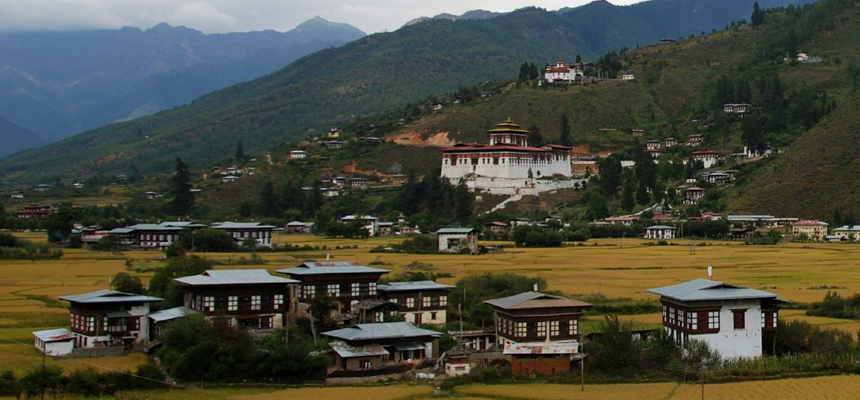Sightseeing around Paro
Kyichu Lhakhang
This temple is said to have been built in 1659 by King Songtsen Gampo of Tibet. It holds down the left foot of an ogress that is so large that it covers Bhutan and most of eastern Tibet.
Rinpung Dzong :
Meaning the fortress on a heap of Jewels was built during the time of Shabdrung in 1646. The approach to the dzong is through a traditional covered bridge. A walk to the dzong offers a good view of the architectural wonder of the dzong as well as life around it. The dzong now houses the Paro monastic school and the office of the civil administration. It is also the venue of the great Paro Tshechu (festival) held once a year in spring.
Taksang Monastery or Tiger’s Nes Drugyel
Literally means the Tiger’s den. This temple clings precariously to a granite cliff 800m above the Paro valley. Legend has it that the great Guru Padmasambhava flew to this spot on back of a tigress and meditated in a cave during the 8th century. The temple was built around the cave and is a hallowed shrine for Bhutanese pilgrims. A terrible fire in April 1998 destroyed Taktsang’s medieval wall paintings and all inner temples. A new construction has already begun by the royal Government.
Ta Dzong
Looking down upon the Rinpung dzong was built in 1651 as a watch tower. The Ta Dzong is round more like parts of a European castle. Since 1967 the dzong was re-established as the national museum and holds a fascinating collection of arts, relics and religious Thanka paintings.
Drukgyal Dzong
Which means victorious fortress was built in 1646 by Shabdrung Ngawang Namgyel to commemorate his victory over the Tibetan invaders, led by Mongolian warlord, Gushri Khan in 1644. Strategically built over the only passage into Paro valley, the dzong helped to repel numerous invasions all through the course of Bhutanese history. It so impressed early visitors that in 1914 the dzong featured on the cover of the National Geographic magazine. The dzong was gutted by an accidental fire in 1951. The ruins, as it stands today still attract tourists.
Farm house
The beauty of Paro valley is embellished by cluster of quaint farm houses. Bhutanese houses are very colourful and traditionally built without the use of a single nail. The house looks very big from outside but is quite simple inside. Its normally three storeys. The ground floor is always used for cattle while the attic is used to store hay. The families live in the middle floor. The best room is always kept for the family chapel. A visit to a farm house is very interesting and offers a good glimpse into the lifestyle of a farmer.
Kila Gompa
This is the serene home of Buddhist nuns who have dedicated their lives to spiritual fulfilment. In this gompa, nestled in a craggy patch of rock on the mountainside below Chele-la pass, they spend their days in religious studies, prayer and meditation. Kila Gompa is about an hour’s walk from Chele-la, down a path through pine forest.
Druk Choeding
This temple in Paro town was built in 1525 by Ngawang Cheryl, one of the prince abbots of Riling in Tibet, and an ancestor of the Shabdrung, Ngawang Namgyal.


Comments